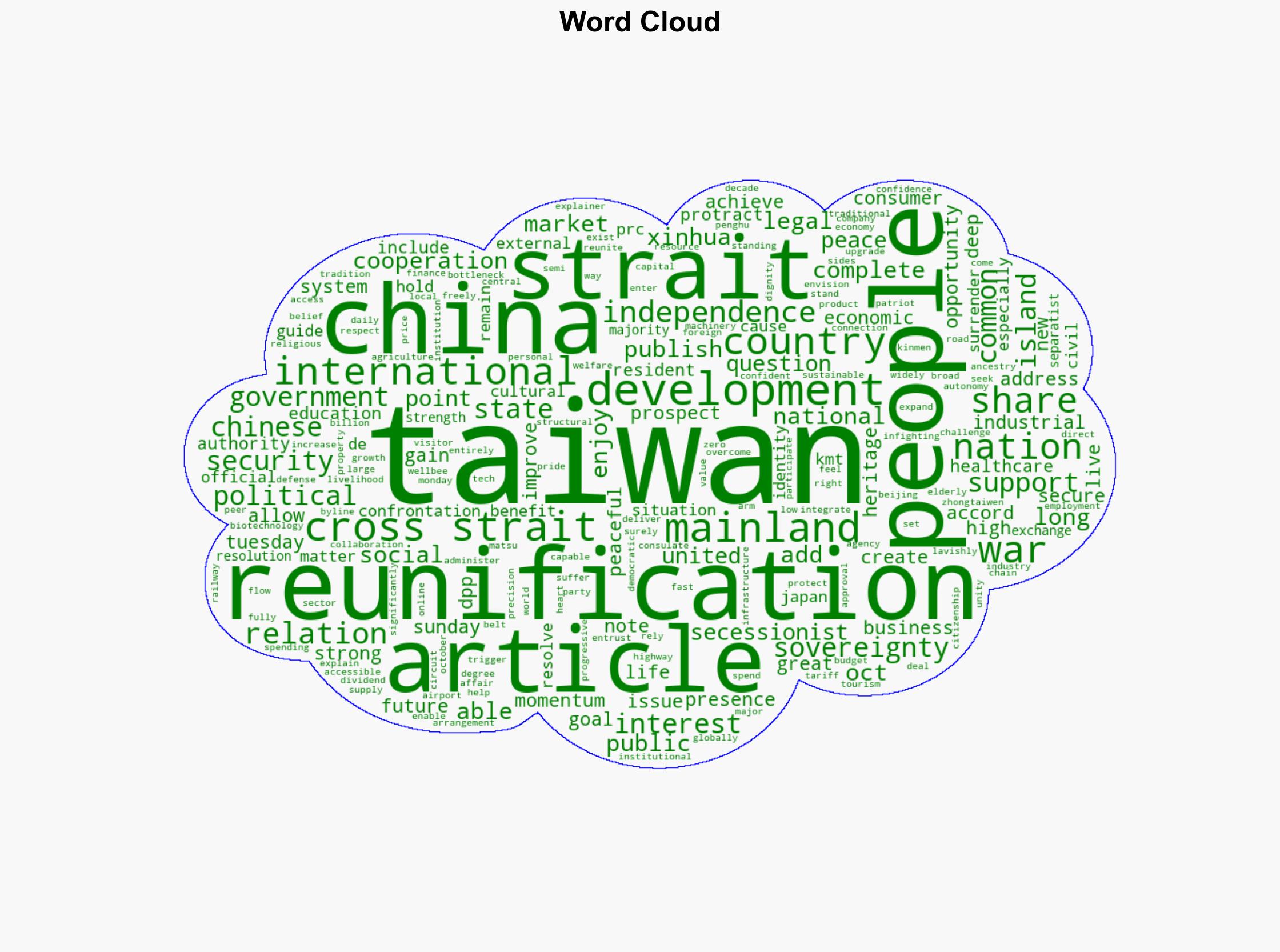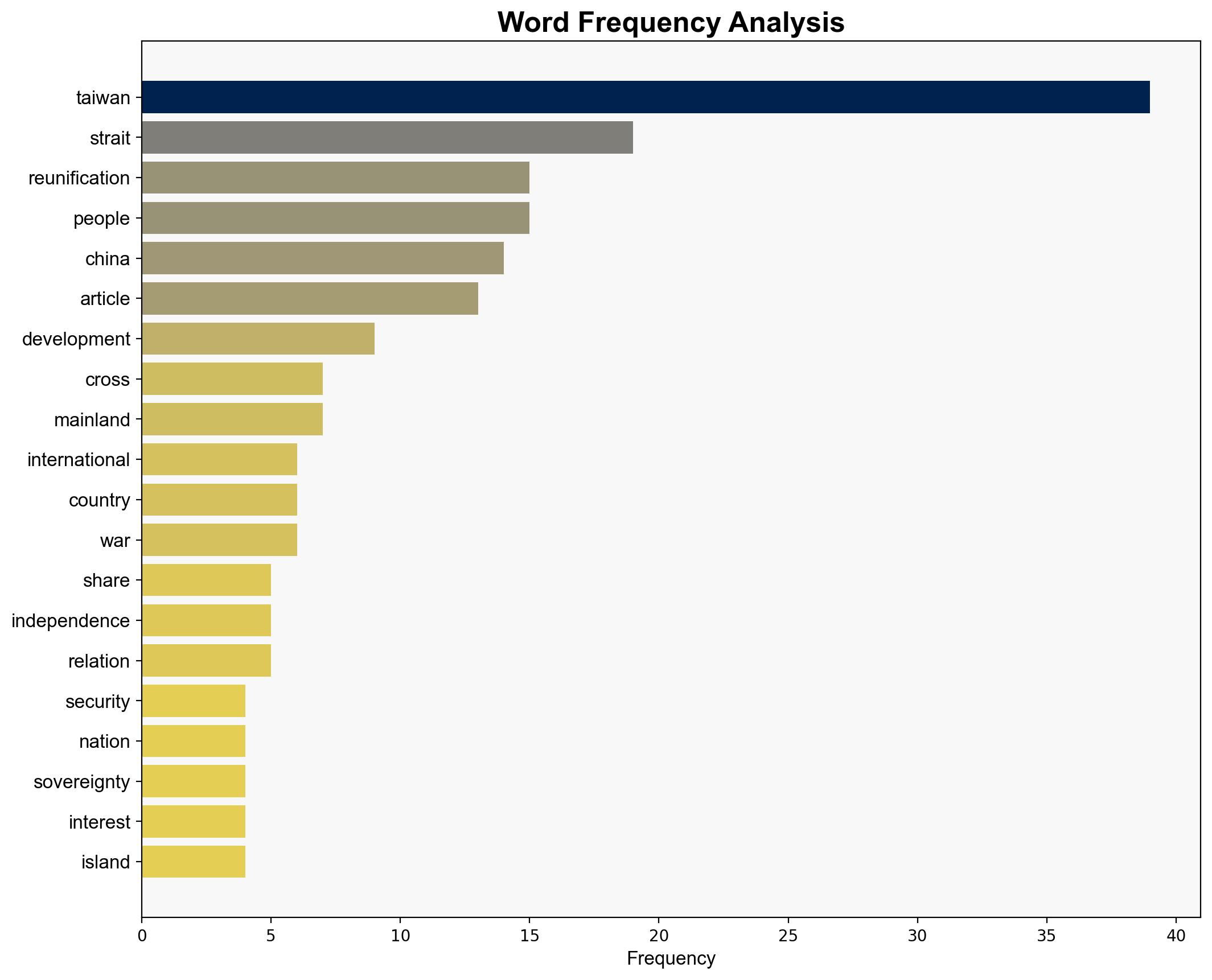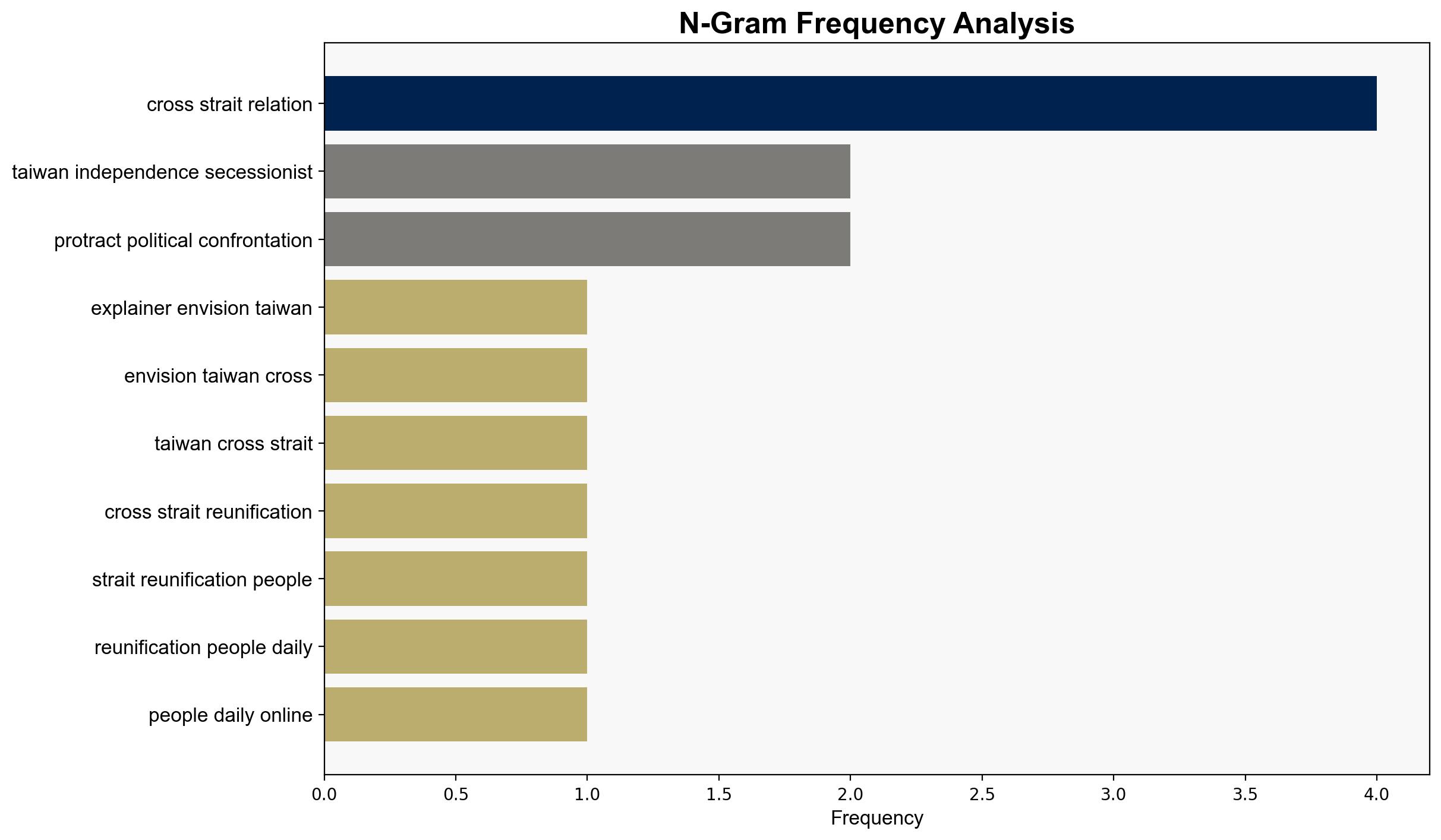Explainer Envisioning Taiwan after cross-Strait reunification – Globalsecurity.org
Published on: 2025-10-30
Intelligence Report: Explainer Envisioning Taiwan after cross-Strait reunification – Globalsecurity.org
1. BLUF (Bottom Line Up Front)
The most supported hypothesis suggests that the narrative of peaceful reunification presented by the source is primarily a strategic communication effort by Beijing to influence perceptions and reduce resistance to reunification. Confidence in this assessment is moderate due to the lack of independent verification and potential bias in the source. Recommended action includes monitoring cross-Strait relations closely and preparing for potential shifts in regional security dynamics.
2. Competing Hypotheses
1. **Hypothesis A**: The article accurately reflects a genuine and feasible plan for peaceful reunification, with substantial economic and social benefits for Taiwan.
2. **Hypothesis B**: The article is a strategic narrative by Beijing aimed at shaping perceptions and reducing resistance to reunification, rather than a reflection of a concrete and achievable plan.
Using ACH 2.0, Hypothesis B is better supported due to the lack of independent corroboration of the claims and the potential bias of the source, Xinhua News Agency, which is state-controlled.
3. Key Assumptions and Red Flags
– **Assumptions**: Hypothesis A assumes that the economic and social benefits outlined are achievable and that Taiwan’s political landscape will align with these goals. Hypothesis B assumes that the narrative is primarily for strategic influence rather than a feasible plan.
– **Red Flags**: The absence of independent sources corroborating the benefits and feasibility of reunification. Potential cognitive bias includes confirmation bias if one assumes the article’s claims are accurate without critical analysis.
4. Implications and Strategic Risks
– **Economic Risks**: If reunification is pursued under current tensions, economic instability could arise from disrupted trade and investment flows.
– **Geopolitical Risks**: Escalation in cross-Strait tensions could involve regional powers and impact global trade routes.
– **Psychological Risks**: The narrative may influence public opinion in Taiwan, potentially leading to internal divisions and unrest.
5. Recommendations and Outlook
- Enhance intelligence collection on cross-Strait communications and actions to verify claims and intentions.
- Engage in diplomatic dialogues with regional stakeholders to prepare for potential shifts in regional security dynamics.
- Scenario Projections:
- Best Case: Peaceful negotiations lead to mutually beneficial arrangements.
- Worst Case: Increased tensions lead to military confrontation.
- Most Likely: Continued strategic posturing and diplomatic engagements without immediate resolution.
6. Key Individuals and Entities
– Zhongtaiwen (author of the article)
– Xinhua News Agency (source of the article)
7. Thematic Tags
national security threats, regional focus, strategic communications, cross-Strait relations




